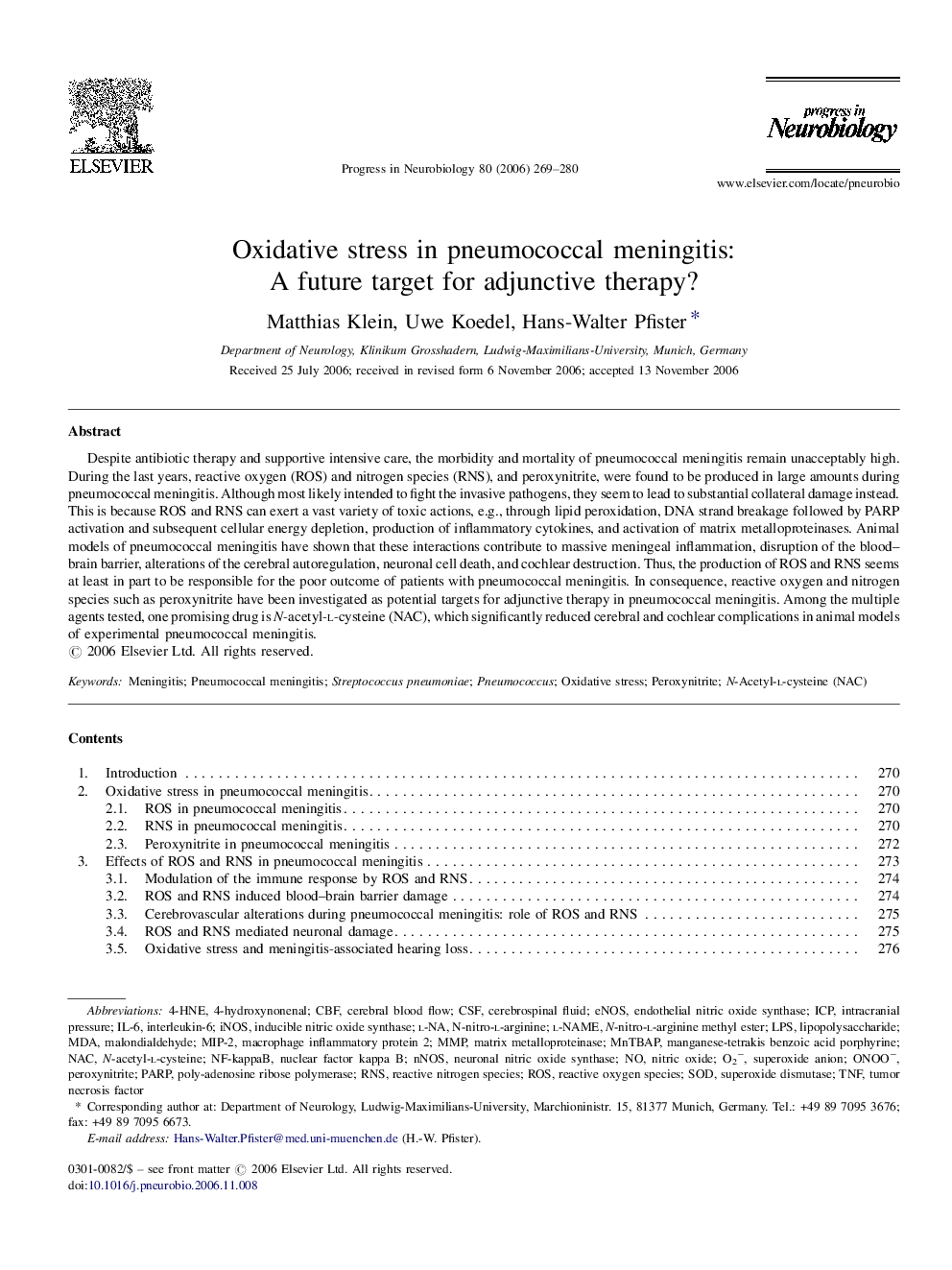| Article ID | Journal | Published Year | Pages | File Type |
|---|---|---|---|---|
| 4354006 | Progress in Neurobiology | 2006 | 12 Pages |
Despite antibiotic therapy and supportive intensive care, the morbidity and mortality of pneumococcal meningitis remain unacceptably high. During the last years, reactive oxygen (ROS) and nitrogen species (RNS), and peroxynitrite, were found to be produced in large amounts during pneumococcal meningitis. Although most likely intended to fight the invasive pathogens, they seem to lead to substantial collateral damage instead. This is because ROS and RNS can exert a vast variety of toxic actions, e.g., through lipid peroxidation, DNA strand breakage followed by PARP activation and subsequent cellular energy depletion, production of inflammatory cytokines, and activation of matrix metalloproteinases. Animal models of pneumococcal meningitis have shown that these interactions contribute to massive meningeal inflammation, disruption of the blood–brain barrier, alterations of the cerebral autoregulation, neuronal cell death, and cochlear destruction. Thus, the production of ROS and RNS seems at least in part to be responsible for the poor outcome of patients with pneumococcal meningitis. In consequence, reactive oxygen and nitrogen species such as peroxynitrite have been investigated as potential targets for adjunctive therapy in pneumococcal meningitis. Among the multiple agents tested, one promising drug is N-acetyl-l-cysteine (NAC), which significantly reduced cerebral and cochlear complications in animal models of experimental pneumococcal meningitis.
